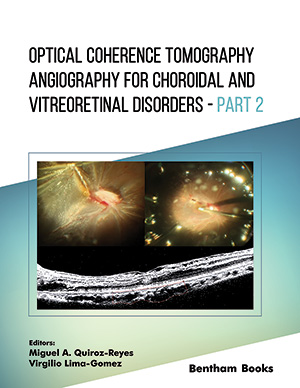Abstract
Alzheimer’s Disease (AD) is the most frequent neurodegenerative disorder. Although proteinaceous aggregates of extracellular Amyloid-β (Aβ) and intracellular hyperphosphorylated microtubule- associated tau have long been identified as characteristic neuropathological hallmarks of AD, a disease- modifying therapy against these targets has not been successful. An emerging concept is that microglia, the innate immune cells of the brain, are major players in AD pathogenesis. Microglia are longlived tissue-resident professional phagocytes that survey and rapidly respond to changes in their microenvironment. Subpopulations of microglia cluster around Aβ plaques and adopt a transcriptomic signature specifically linked to neurodegeneration. A plethora of molecules and pathways associated with microglia function and dysfunction has been identified as important players in mediating neurodegeneration. However, whether microglia exert either beneficial or detrimental effects in AD pathology may depend on the disease stage.
In this review, we summarize the current knowledge about the stage-dependent role of microglia in AD, including recent insights from genetic and gene expression profiling studies as well as novel imaging techniques focusing on microglia in human AD pathology and AD mouse models.
Keywords: Microglia, Alzheimer's disease, genetics, transcriptomics, neurofibrillary tangles, Aβ plaques.
[http://dx.doi.org/10.1016/S1474-4422(16)30235-6] [PMID: 27751558]
[http://dx.doi.org/10.15252/emmm.201606210] [PMID: 27025652]
[http://dx.doi.org/10.1038/ni.3102] [PMID: 25689443]
[http://dx.doi.org/10.1126/science.1194637] [PMID: 20966214]
[http://dx.doi.org/10.1038/nn.4547] [PMID: 28414331]
[http://dx.doi.org/10.1038/nn2014] [PMID: 18026097]
[http://dx.doi.org/10.1016/j.celrep.2016.12.041] [PMID: 28076784]
[http://dx.doi.org/10.1016/j.celrep.2017.07.004] [PMID: 28746864]
[http://dx.doi.org/10.1038/nn.4631] [PMID: 28846081]
[http://dx.doi.org/10.1126/science.1110647] [PMID: 15831717]
[http://dx.doi.org/10.1038/nn1472] [PMID: 15895084]
[http://dx.doi.org/10.2174/156720509790147179] [PMID: 19747160]
[http://dx.doi.org/10.1038/s41590-018-0212-1] [PMID: 30250185]
[http://dx.doi.org/10.1038/s41583-018-0057-5] [PMID: 30206328]
[http://dx.doi.org/10.1126/science.aal3222] [PMID: 28546318]
[http://dx.doi.org/10.1038/nn.4597] [PMID: 28671693]
[http://dx.doi.org/10.1126/science.aay0793] [PMID: 31727856]
[http://dx.doi.org/10.1038/s41586-019-0924-x] [PMID: 30760929]
[http://dx.doi.org/10.1038/s41593-018-0290-2] [PMID: 30559476]
[http://dx.doi.org/10.1038/ng.3916] [PMID: 28714976]
[http://dx.doi.org/10.1038/s41588-018-0311-9] [PMID: 30617256]
[http://dx.doi.org/10.1016/j.celrep.2019.03.099] [PMID: 31018141]
[http://dx.doi.org/10.1038/s41577-018-0051-1] [PMID: 30140051]
[http://dx.doi.org/10.1016/0006-8993(91)91092-F] [PMID: 2029618]
[http://dx.doi.org/10.1523/JNEUROSCI.1860-14.2014] [PMID: 25186741]
[http://dx.doi.org/10.1523/JNEUROSCI.5476-05.2006] [PMID: 16687490]
[http://dx.doi.org/10.1523/JNEUROSCI.3773-11.2011] [PMID: 22159114]
[http://dx.doi.org/10.1038/nature24016] [PMID: 28959956]
[http://dx.doi.org/10.1016/j.neuron.2017.11.013] [PMID: 29216449]
[http://dx.doi.org/10.1016/j.cell.2017.05.018] [PMID: 28602351]
[http://dx.doi.org/10.1016/j.immuni.2017.08.008] [PMID: 28930663]
[http://dx.doi.org/10.1084/jem.20180653] [PMID: 30082275]
[http://dx.doi.org/10.1056/NEJMoa1211851] [PMID: 23150934]
[http://dx.doi.org/10.1056/NEJMoa1211103] [PMID: 23150908]
[http://dx.doi.org/10.1074/jbc.M115.679043] [PMID: 26374899]
[http://dx.doi.org/10.1016/j.neuron.2016.06.015] [PMID: 27477018]
[http://dx.doi.org/10.1016/j.neuron.2018.01.031] [PMID: 29518356]
[http://dx.doi.org/10.1016/j.cell.2015.01.049] [PMID: 25728668]
[http://dx.doi.org/10.1016/j.immuni.2019.03.016] [PMID: 30995509]
[http://dx.doi.org/10.15252/emmm.201707672] [PMID: 28855300]
[http://dx.doi.org/10.1084/jem.20160844] [PMID: 28209725]
[http://dx.doi.org/10.1007/s00401-016-1533-5] [PMID: 26754641]
[http://dx.doi.org/10.1126/scitranslmed.aav6221] [PMID: 31462511]
[http://dx.doi.org/10.1186/s13024-018-0301-5] [PMID: 30630532]
[http://dx.doi.org/10.1084/jem.20041611] [PMID: 15728241]
[http://dx.doi.org/10.1038/s41582-018-0072-1] [PMID: 30266932]
[http://dx.doi.org/10.1016/j.cell.2017.07.023] [PMID: 28802038]
[http://dx.doi.org/10.1523/JNEUROSCI.2110-16.2016] [PMID: 28100745]
[http://dx.doi.org/10.1084/jem.20151948] [PMID: 27091843]
[http://dx.doi.org/10.1073/pnas.1710311114] [PMID: 29073081]
[http://dx.doi.org/10.1073/pnas.1811411115] [PMID: 30232263]
[http://dx.doi.org/10.1038/s41593-018-0296-9] [PMID: 30617257]
[http://dx.doi.org/10.1016/j.neuron.2013.04.014] [PMID: 23623698]
[http://dx.doi.org/10.1007/s00401-019-02000-4] [PMID: 30949760]
[http://dx.doi.org/10.1016/j.neuron.2019.06.010]
[http://dx.doi.org/10.1038/ng.803] [PMID: 21460840]
[http://dx.doi.org/10.1523/JNEUROSCI.3757-15.2016] [PMID: 27030769]
[http://dx.doi.org/10.1073/pnas.1908529116] [PMID: 31690660]
[http://dx.doi.org/10.1186/s13195-019-0469-0] [PMID: 30711010]
[http://dx.doi.org/10.5582/irdr.2017.01073] [PMID: 29259854]
[http://dx.doi.org/10.1038/nn.4587] [PMID: 28628103]
[http://dx.doi.org/10.1038/nature14252] [PMID: 25693568]
[http://dx.doi.org/10.1038/s41586-018-0023-4] [PMID: 29643512]
[http://dx.doi.org/10.1016/j.immuni.2018.02.016] [PMID: 29548672]
[http://dx.doi.org/10.1016/j.neurobiolaging.2008.06.011] [PMID: 18657882]
[http://dx.doi.org/10.1186/1742-2094-2-22] [PMID: 16212664]
[http://dx.doi.org/10.1016/j.neuron.2007.01.010] [PMID: 17270732]
[http://dx.doi.org/10.1038/nature06616] [PMID: 18256671]
[http://dx.doi.org/10.1523/JNEUROSCI.4814-07.2008] [PMID: 18417708]
[http://dx.doi.org/10.1016/j.neuron.2016.09.016] [PMID: 27710785]
[http://dx.doi.org/10.1084/jem.20171265] [PMID: 29483128]
[http://dx.doi.org/10.1016/j.neurobiolaging.2014.06.004] [PMID: 25002035]
[http://dx.doi.org/10.1016/j.bbadis.2016.07.007] [PMID: 27425031]
[http://dx.doi.org/10.1016/j.neurobiolaging.2017.03.021] [PMID: 28434692]
[http://dx.doi.org/10.1016/j.celrep.2017.09.039] [PMID: 29020624]
[http://dx.doi.org/10.1038/nn.3599] [PMID: 24316888]
[http://dx.doi.org/10.1038/nn.3554] [PMID: 24162652]
[http://dx.doi.org/10.1186/s40478-015-0203-5] [PMID: 26001565]
[http://dx.doi.org/10.1016/j.immuni.2018.02.014] [PMID: 29562204]
[http://dx.doi.org/10.1002/glia.22966] [PMID: 26847266]
[http://dx.doi.org/10.1186/s12974-019-1473-9] [PMID: 30992040]
[http://dx.doi.org/10.1016/0165-5728(89)90115-X] [PMID: 2808689]
[http://dx.doi.org/10.1002/glia.23097] [PMID: 27862351]
[http://dx.doi.org/10.1016/0304-3940(87)90696-3] [PMID: 3670729]
[http://dx.doi.org/10.1007/s00401-019-02013-z] [PMID: 31006066]
[http://dx.doi.org/10.1007/s00401-009-0556-6] [PMID: 19513731]
[http://dx.doi.org/10.1002/glia.23024] [PMID: 27404378]
[http://dx.doi.org/10.1038/s41586-019-1195-2] [PMID: 31042697]
[http://dx.doi.org/10.1016/j.celrep.2017.12.066] [PMID: 29346778]
[http://dx.doi.org/10.1038/s41467-018-02926-5] [PMID: 29416036]
[http://dx.doi.org/10.1093/brain/awy188] [PMID: 30052812]
[http://dx.doi.org/10.1093/brain/aww349] [PMID: 28122877]
[http://dx.doi.org/10.1093/brain/aww017] [PMID: 26984188]
[http://dx.doi.org/10.1016/j.neuron.2015.11.013] [PMID: 26687838]
[http://dx.doi.org/10.1073/pnas.1525528113] [PMID: 26884166]
[http://dx.doi.org/10.7150/thno.25572] [PMID: 30555554]
[http://dx.doi.org/10.1073/pnas.1812155116] [PMID: 30635412]
[http://dx.doi.org/10.1186/1742-2094-8-92] [PMID: 21827663]
[http://dx.doi.org/10.1523/JNEUROSCI.1146-08.2008] [PMID: 18509040]
[http://dx.doi.org/10.1172/JCI90606] [PMID: 28862638]
[http://dx.doi.org/10.1093/brain/awh531] [PMID: 15857927]
[http://dx.doi.org/10.1523/JNEUROSCI.2637-10.2010] [PMID: 21084593]
[http://dx.doi.org/10.1084/jem.20021546] [PMID: 12796468]
[http://dx.doi.org/10.1016/S0002-9440(10)64354-4] [PMID: 11786404]
[http://dx.doi.org/10.1523/JNEUROSCI.2127-10.2010] [PMID: 20739563]
[http://dx.doi.org/10.1159/000261723] [PMID: 20145420]
[http://dx.doi.org/10.1038/382716a0] [PMID: 8751442]
[http://dx.doi.org/10.1038/ncomms3030] [PMID: 23799536]
[PMID: 8176223]
[http://dx.doi.org/10.1006/exnr.1996.0043] [PMID: 8593893]
[http://dx.doi.org/10.1038/s41591-018-0336-8] [PMID: 30692699]
[http://dx.doi.org/10.1007/BF00227813] [PMID: 1414275]
[http://dx.doi.org/10.1038/ni.1636] [PMID: 18604209]
[http://dx.doi.org/10.1038/s41583-018-0055-7] [PMID: 30206330]
[http://dx.doi.org/10.1038/nature11729] [PMID: 23254930]
[http://dx.doi.org/10.3233/JAD-141704] [PMID: 25362031]
[PMID: 29290552]
[http://dx.doi.org/10.1038/nature25158] [PMID: 29293211]
[http://dx.doi.org/10.1186/s13024-018-0244-x] [PMID: 29490706]
[http://dx.doi.org/10.1038/s41467-019-11674-z] [PMID: 31434879]
[http://dx.doi.org/10.1084/jem.20142322] [PMID: 25732305]
[http://dx.doi.org/10.1126/science.aad8373] [PMID: 27033548]
[http://dx.doi.org/10.1074/jbc.273.49.32730] [PMID: 9830016]
[http://dx.doi.org/10.1126/science.1059946] [PMID: 11375493]
[http://dx.doi.org/10.1523/JNEUROSCI.0616-08.2008] [PMID: 18701698]
[http://dx.doi.org/10.1074/jbc.M602440200] [PMID: 16787929]
[http://dx.doi.org/10.1371/journal.pone.0060921] [PMID: 23577177]
[http://dx.doi.org/10.1002/glia.10319] [PMID: 14730714]
[http://dx.doi.org/10.1038/s41586-019-1088-4] [PMID: 30944478]
[http://dx.doi.org/10.1016/j.neuron.2006.01.022] [PMID: 16476660]
[http://dx.doi.org/10.1038/nm1781] [PMID: 18516051]
[http://dx.doi.org/10.1038/nn.4475] [PMID: 28092660]
[http://dx.doi.org/10.1523/JNEUROSCI.6209-10.2011] [PMID: 21813677]
[http://dx.doi.org/10.1016/j.neuron.2015.09.036] [PMID: 26494278]
[http://dx.doi.org/10.1002/ana.21340] [PMID: 18360829]
[http://dx.doi.org/10.3233/JAD-150704] [PMID: 26638867]
[http://dx.doi.org/10.1016/j.celrep.2018.07.072] [PMID: 30134156]
[http://dx.doi.org/10.1038/nn.4132] [PMID: 26436904]
[http://dx.doi.org/10.1016/j.neuron.2010.08.023] [PMID: 20920788]
[http://dx.doi.org/10.1093/brain/awv081] [PMID: 25833819]
[http://dx.doi.org/10.1007/s00401-018-01957-y] [PMID: 30721409]
[http://dx.doi.org/10.1038/s41586-019-1769-z] [PMID: 31748742]
[http://dx.doi.org/10.1038/s41586-018-0543-y] [PMID: 30232451]
[http://dx.doi.org/10.1038/nn.2511] [PMID: 20305648]
[http://dx.doi.org/10.1093/brain/aww016] [PMID: 26921617]
[http://dx.doi.org/10.1038/s41593-018-0242-x] [PMID: 30258234]
[http://dx.doi.org/10.1016/j.neuron.2018.10.014] [PMID: 30392797]
[http://dx.doi.org/10.1038/nature21029] [PMID: 28099414]
[http://dx.doi.org/10.1016/j.neuron.2014.11.018] [PMID: 25533482]
[http://dx.doi.org/10.1523/JNEUROSCI.2117-15.2016] [PMID: 26758846]
[http://dx.doi.org/10.1016/j.neuron.2018.10.031] [PMID: 30415998]
[http://dx.doi.org/10.1016/j.neuron.2019.01.014] [PMID: 30737131]
[http://dx.doi.org/10.1016/j.neuron.2017.05.037] [PMID: 28669544]





























